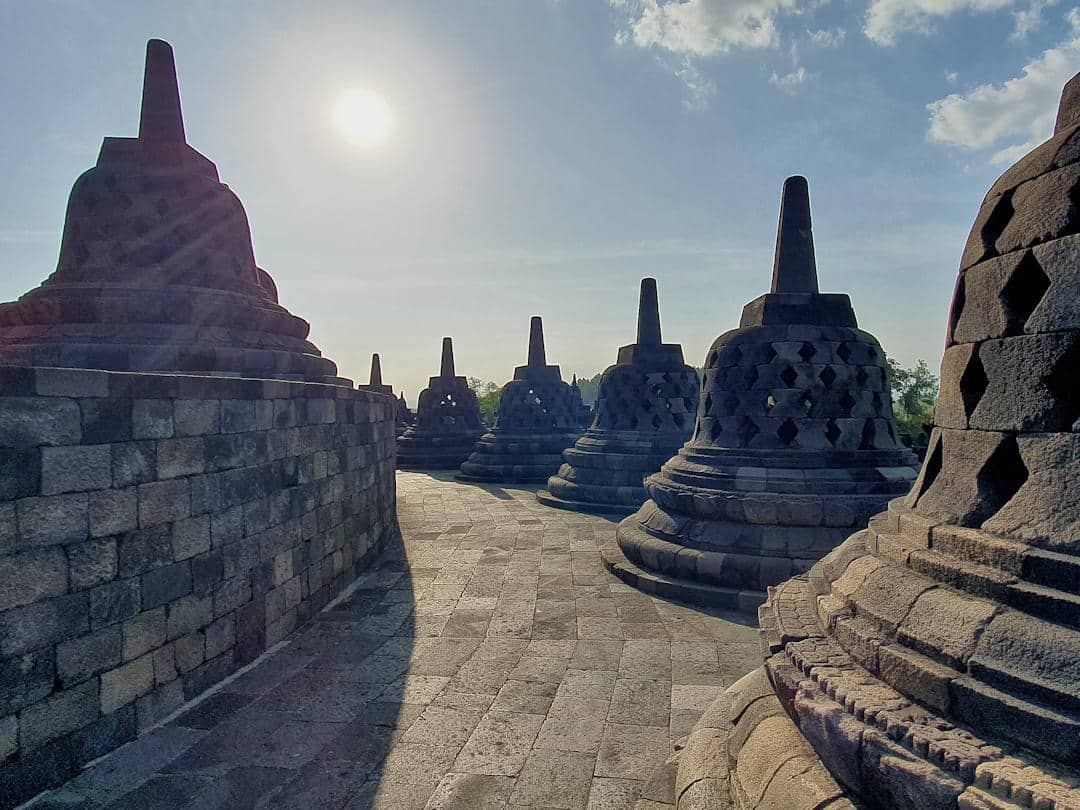Planning to visit the magnificent Borobudur Temple in Indonesia as an independent (foreign) traveler? You’ve come to the right place. Aiming to protect this very special place from over-tourism, significant changes were introduced in 2023. But don’t fret. Our guide will provide you with all the up-to-date information you need, including the best times to visit, how to book your entry slot, and what to expect during your visit.
Download your Sustainable Travel Checklist and show the world you care
As travellers, we should all be aware of our travel behaviour and its environmental, economic and social impact; and make conscious decisions about it. Too often, we hear negative stories in the media about tourists behaving badly.
Here is your chance to tick some boxes and check out what it really takes to travel with a sustainable mindset.
Map of Accommodation, Points of Interest, Eateries and Transport
Below is a map of the recommended accommodation, points of interest, eateries and transport terminals/stops mentioned in this article.
What and where is Borobudur?
If you’ve heard of Borobudur for the first time, here is a quick intro.
Located in Central Java [Google Maps location] not far from Yogyakarta, this UNESCO World Heritage site is the world’s largest Buddhist temple. It was built in the middle of the 9th century during the reign of the Mataram Kingdom – a Hindu-Buddhist Kingdom that is also responsible for the construction of Prambanan (the largest Hindu temple in Indonesia) and Candi Sewu (the second-largest Buddhist temple in Indonesia, also located in the Prambanan temple complex).
Measuring 118 metres by 118 metres (129 yards by 129 yards) at its base, and with a height of 35 metres (38 yards), Borobudur is a massive stone pyramid, built without the use of mortar around (what is presumed) a man-made hill.
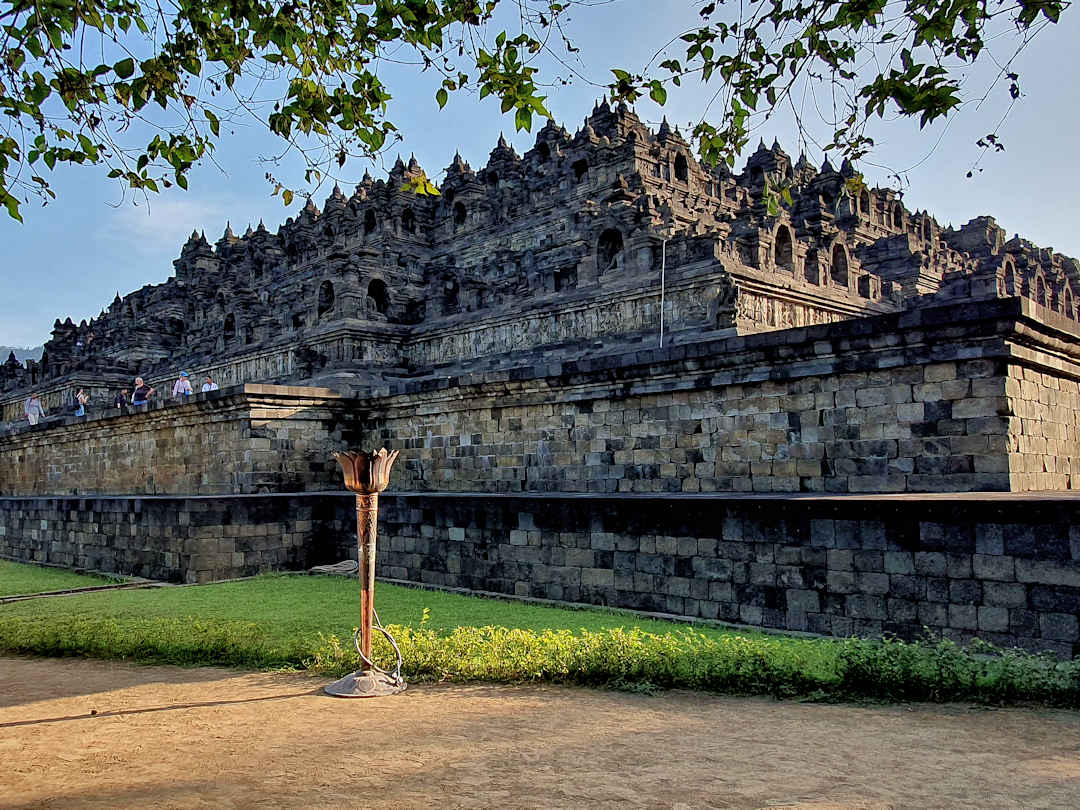
Looking like a giant mandala from above, Borobudur Temple was built without mortar around a man-made hill
Looking like a giant mandala from above, Borobudur is composed of three tiers that represent different realms of consciousness:
- Its square foundation is Kamadhatu, the realm of desire, where humans are driven by their (yet) uncontrolled wants.
- Above it is Rupadhatu, the realm of being, where individuals strive to let go of their desires.
- The final tier, Arupadhatu, signifies the formless realm, in which individuals transcend the physical world.
This final tier of the temple consists of three circular platforms adorned with a total of 72 stupas, each housing a Buddha statue. The temple is topped by a large stupa, representing unconsciousness or Nirvana.
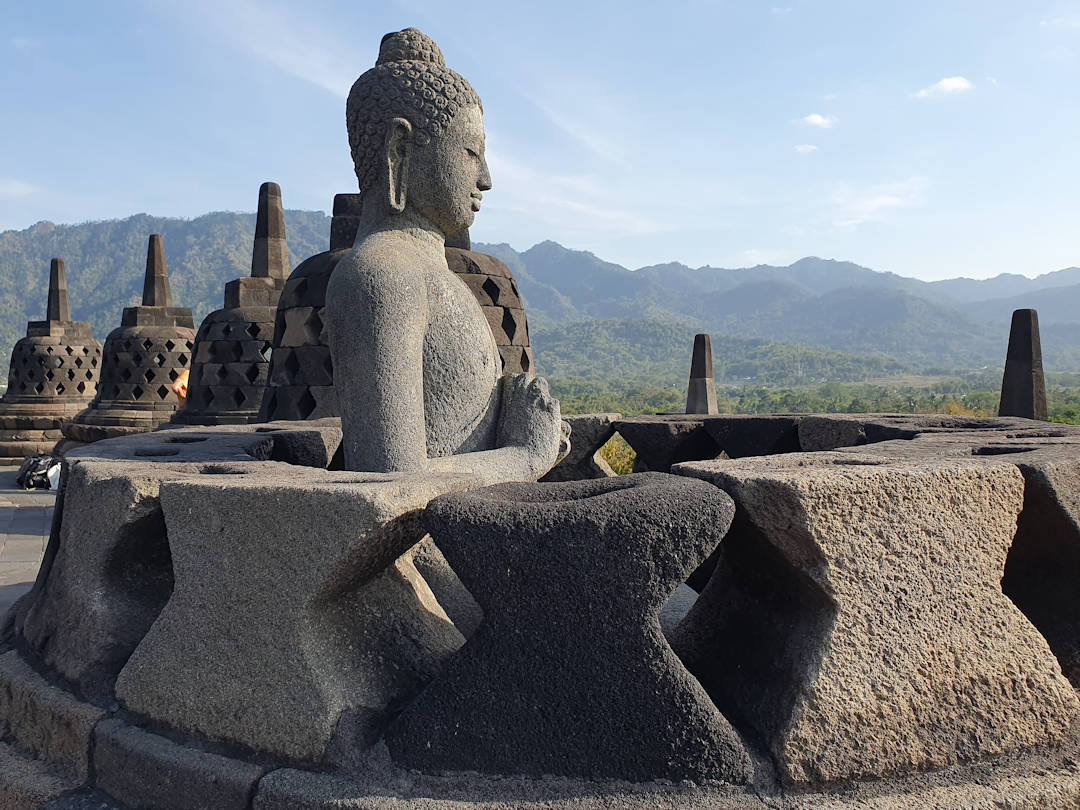
The 72 stupas on top of Borobudur Temple each house a Buddha statue
Borobudur was abandoned between the 12th and 14th century, when Islam spread across Central Java, and the Mataram Kingdom moved to East Java. Being covered by ash, earth and jungle, the temple was re-discovered in 1814, and restored twice since (in 1907-1911 and 1973-1983).
How to get to Borobudur using public transport?
Borobudur is located 34 kilometers northwest of Yogyakarta city center.
The easiest (and cheapest) way to get there is by DAMRI bus from the stop outside the Bank Indonesia Building/opposite the Vredeburg [Google Maps location]. The departure times are
- To Borobudur: 0430h, 0630h, 1000h and 1200h.
- From Borobudur: 0700h, 0900h, 1300h and 1500h.
The fare is IDR20,000 per person one way. Payment is to be made in cash at the departure point.
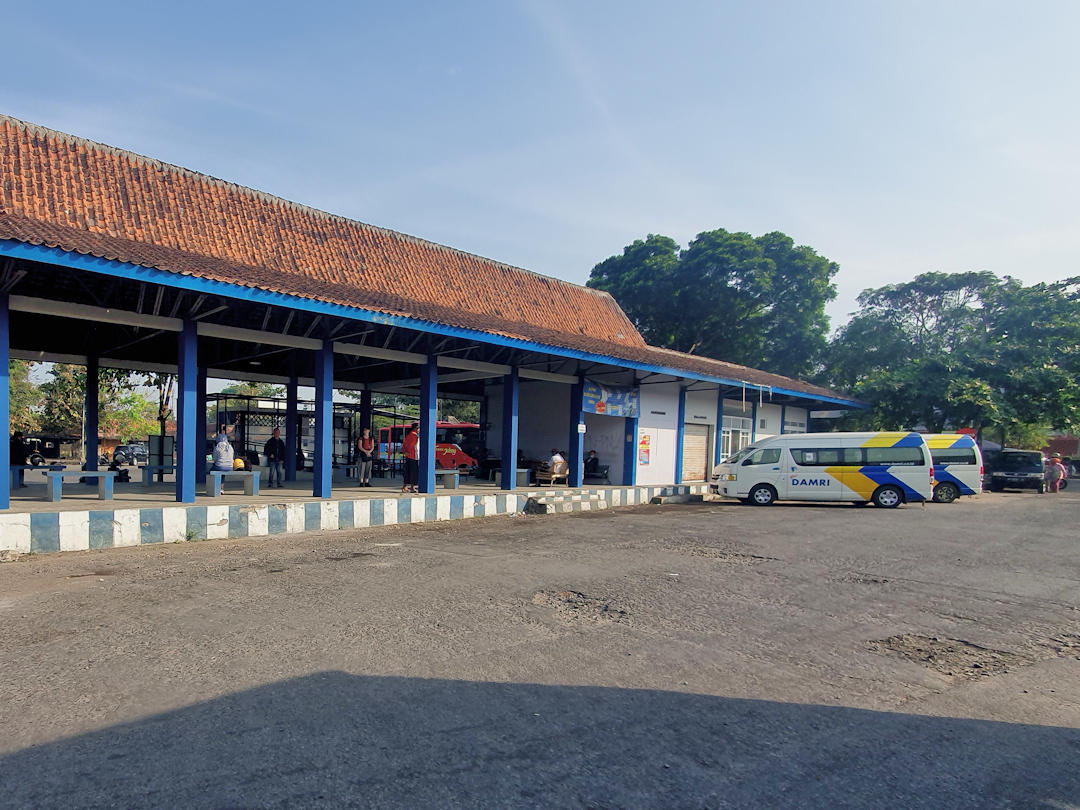
Taking the DAMRI bus from Yogyakarta is the most convenient way to get to Borobudur independently
The alternative (longer and more expensive) option requires a change at the Jombor bus terminal [Google Maps location]:
- From Yogyakarta city centre, take either bus #8 (from Portabel Jl. Gandekan Dagen Bus Stop [Google Maps location] being 5 minutes’ walk south-west of the Yogyakarta train station) or bus #2B (from TPB Perpusda Samsat Kota Yogya Bus Stop [Google Maps location] being 10 minutes walk north-west of the train station) to Jombor bus terminal [Google Maps location]. The individual fare is IDR3,600 one way. Transport cards for use on the Trans Jogja bus network [Large PDF file] can be purchased from the Government Tourist Information Center [Google Maps location] on Malioboro Street and topped up there or at Indomaret/Alphamart convenience stores.
- From Jombor bus terminal, take the local bus to the Borobudur Terminal. The individual fare is IDR25,000 one way. You pay the driver directly, so make sure you have the correct amount.
If you choose this option, be aware that the last bus returning to Yogyakarta also departs at 1500h.
Both options get you to the Borobudur Bus Terminal [Google Maps location]. From there, it’s an easy 10 minute walk along Jl. Pramudyawardhani to the entry gate of the temple complex.
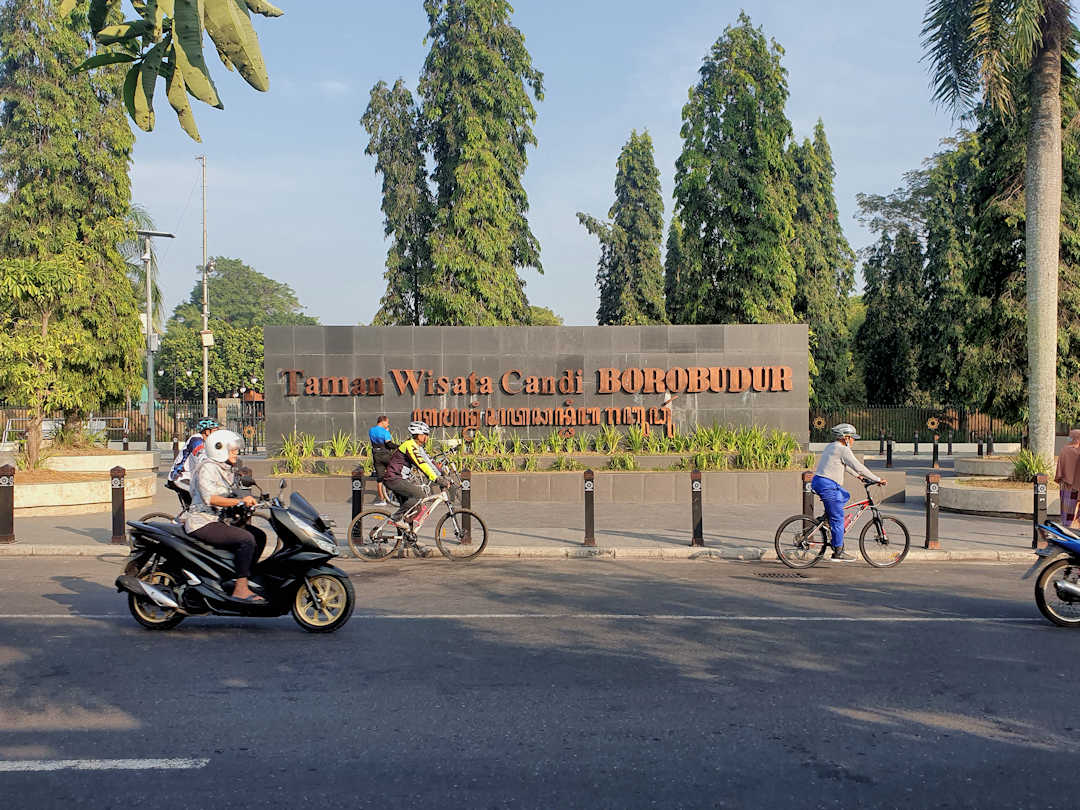
From Borobudur bus terminal, it's an easy 10 minute walk to the entry gate of the temple complex
How to visit Borobudur and what are the entry fees?
Ticket types
In the past, visitors were able to roam Borobudur temple / Candi Borobudur freely, causing overcrowding and damaging the temple structure. To protect the temple and provide employment opportunities for locals, access to Candi Borobudur now requires joining a guided tour (the temple grounds remain unrestricted).
Accordingly, there are now two types of tickets:
- Temple Ground Ticket – as the name suggests, this ticket provides access to the temple grounds (the park surrounding the actual temple); and
- Temple Structure Ticket – This gives you access not only to the grounds but also to Borobudur Temple via a guided tour.
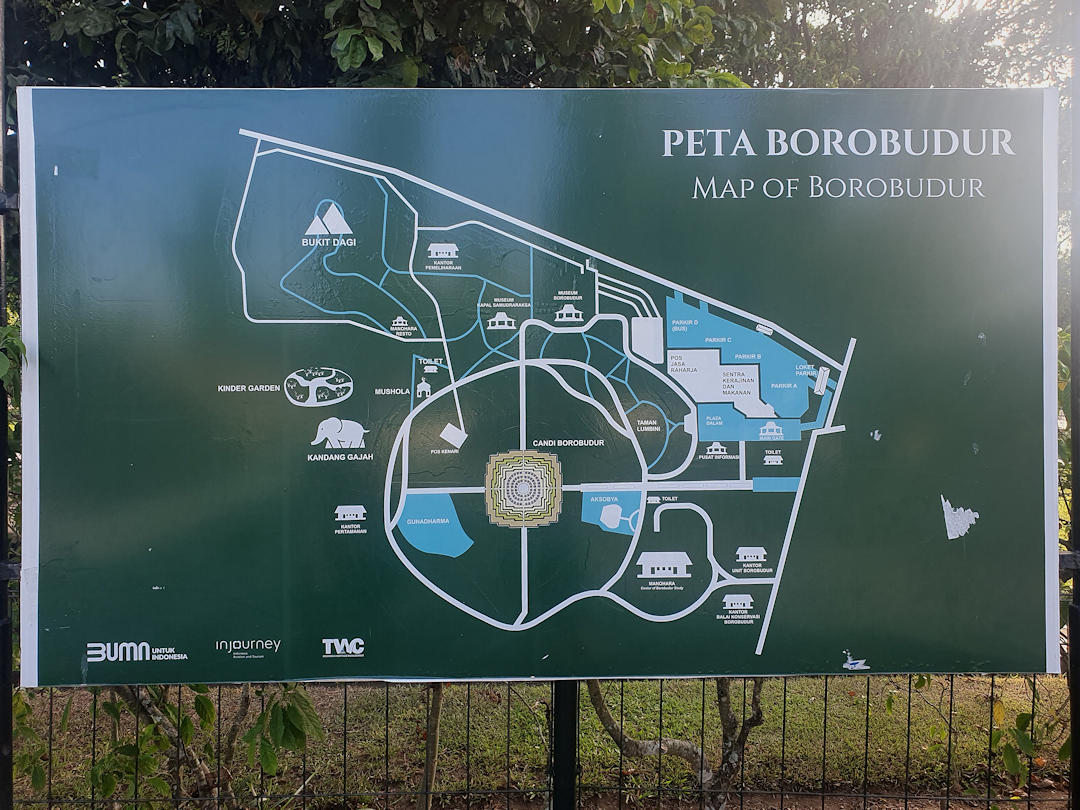
There are two types of tickets at Borobudur - one for the grounds only and one for the grounds plus Candi Borobudur (the temple itself)
Guided tours are held in English only. However, while we were at the temple, we also came across groups whose guides spoke Spanish, Italian, and French. If you want to join a tour in a language other than English, we recommend contacting Borobudur Customer Service via WhatsApp: +62 811 1058 8333. Private tours are also available – at (an additional) IDR30,000 per person. Again, they can be arranged by messaging the Customer Service team.
The temple structure is closed on Mondays. If you are visiting on a Monday, you will only be able to access the grounds.
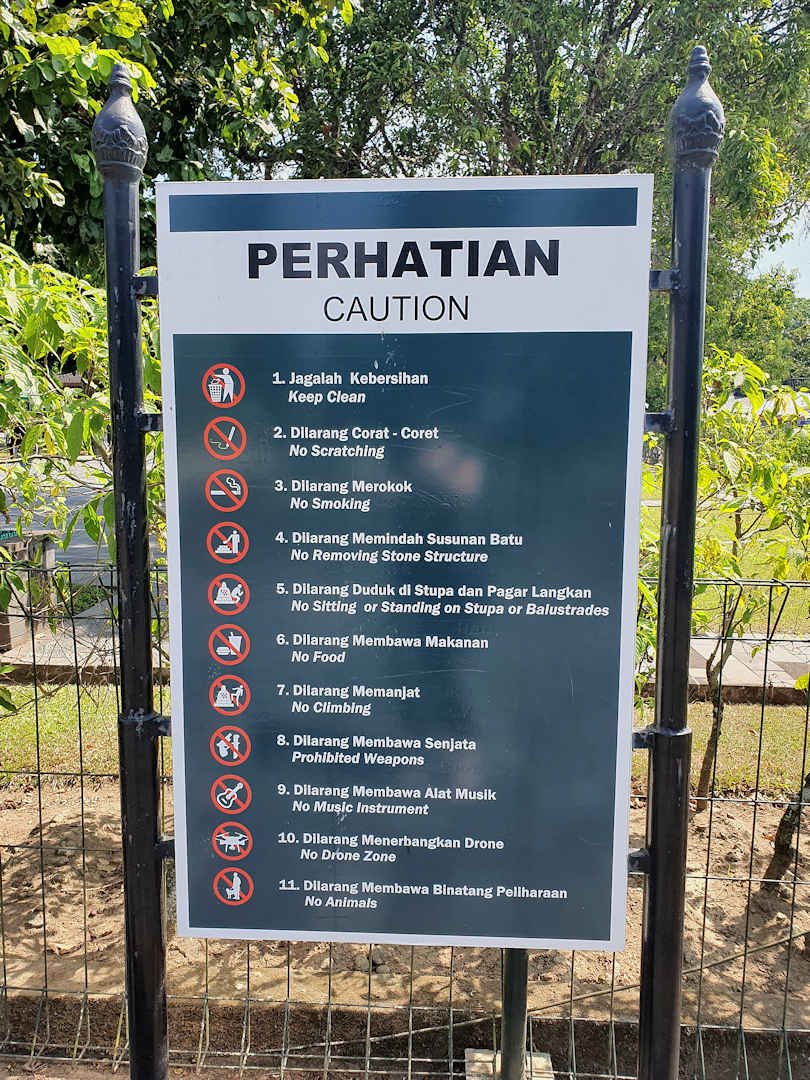
Make sure to stick to the rules when visiting this UNESCO site
Visitor quota (and best times to visit)
Temple Structure tickets are limited to a maximum quota of 1,200 people per day. This quota is further separated into 8 sessions per day, with a maximum of 150 people allowed in each session.
The session times are as follows:
| Session | Temple Access | Departure Time |
|---|---|---|
| 1 | 09:00-10:00 | 08:30 |
| 2 | 10:00-11:00 | 09:30 |
| 3 | 11:00-12:00 | 10:30 |
| 4 | 12:00-13:00 | 11:30 |
| 5 | 13:00-14:00 | 12:30 |
| 6 | 14:00-15:00 | 13:30 |
| 7 | 15:00-16:00 | 14:30 |
| 8 | 16:00-17:00 | 15:30 |
Given the heat of the day, sessions 1, 2, and 3 are the best times to visit, but these are also the most popular times. The best alternative is session 7 (as it starts to cool down by then, and the light is less harsh for photographers).
If possible, avoid sessions 4 and 5 (it’s too hot) and session 8 – your time at the temple is cut short as the complex closes at 1700h, and the walk from the temple to the exit takes a minimum of 20 minutes.
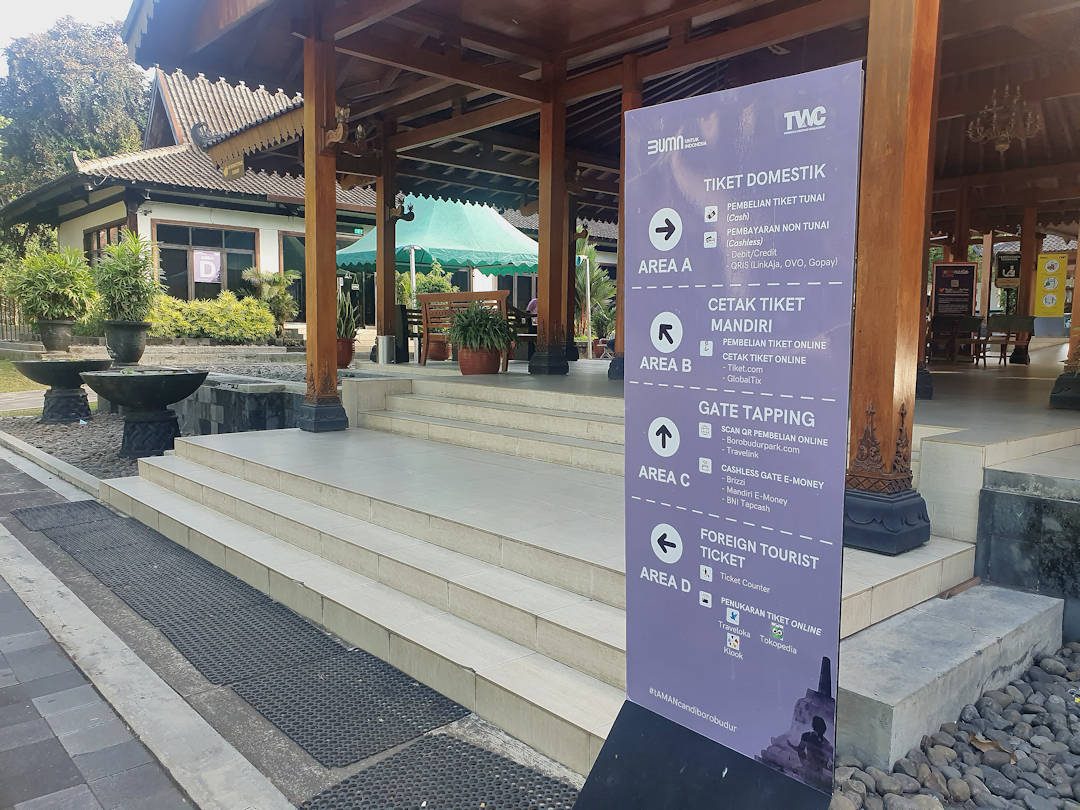
There is a dedicated entry area for foreign visitors to Borobudur
How to purchase tickets
Temple Ground tickets can be bought online (via the official website as well as Klook and Traveloka) or in person at the entry. There is a special entry area for foreigners on the left. Ticket counters are open daily from 0630h to 1630h.
If you want to access the temple structure itself – and we highly recommend it – make sure you book your preferred session well in advance (especially if you want to join a morning session). You can buy your Temple Structure ticket online via the official website – up to seven days ahead of your visit.
Entry fees for foreigners are not cheap: Temple Ground Tickets cost IDR375,000 per adult and Temple Structure Tickets are IDR455,000 per adult (an additional IDR80,000 per adult).
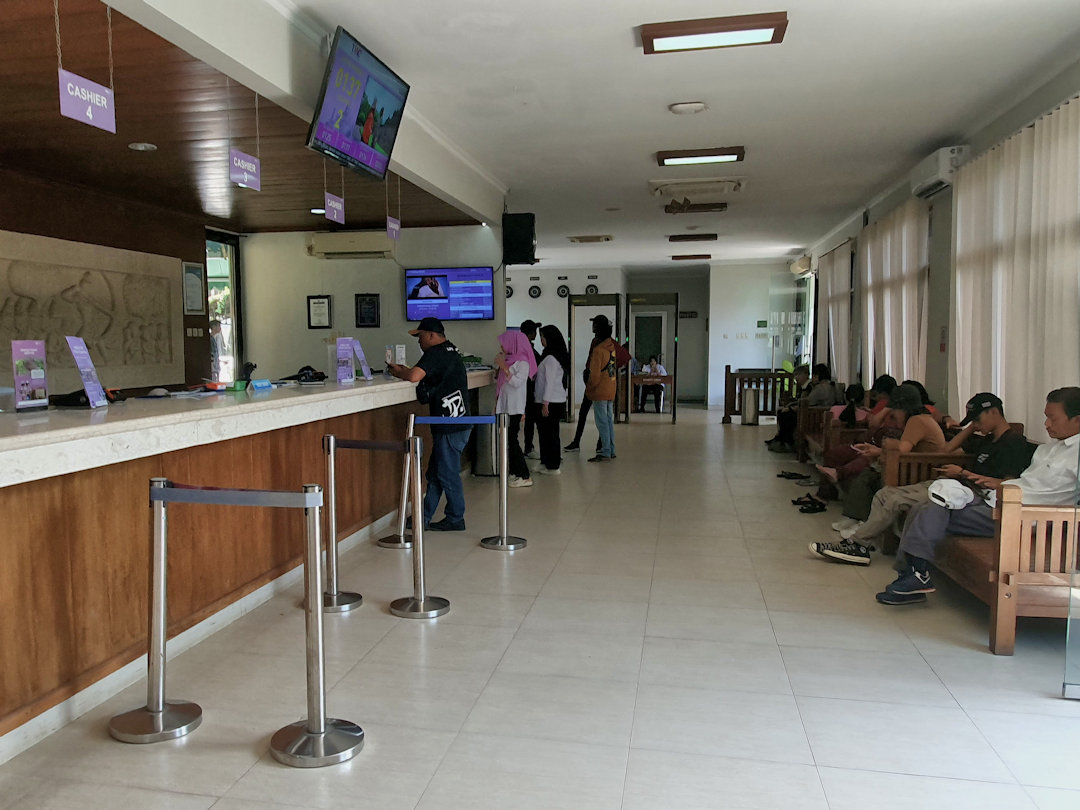
Guided tours of Borobudur Temple depart from the entry area half an hour before the session time
What to expect during the guided tour
Those with Temple Structure tickets will receive a wristband and a number token, and be led through to an outdoor waiting area.
In the waiting area, you will receive a pair of flip-flops you are required to wear when accessing the temple (a canvas bag to carry your shoes during the tour is also provided). The flip-flops are not very comfortable. If you’re prone to blisters, only swap to the flip flops once you’re at the temple entrance, and also bring toe socks or band-aids.
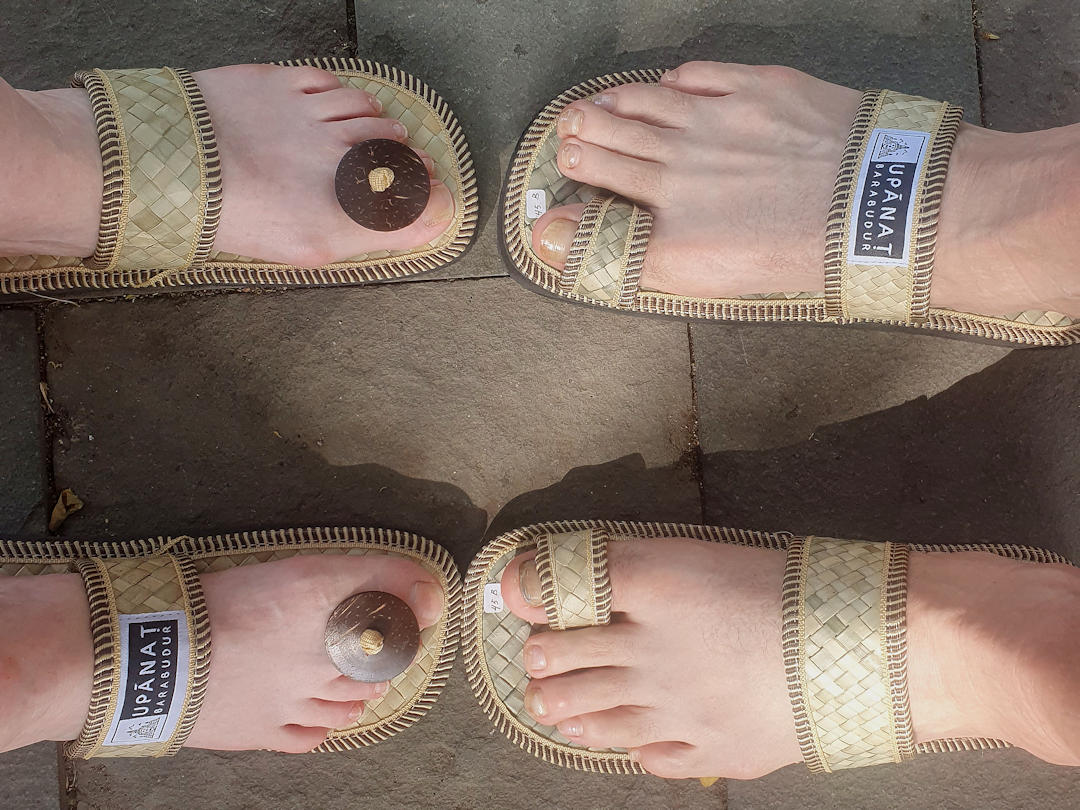
Visitors to Borobudur are required to wear the flip flops provided when accessing the temple structure
The 150 people per session are further separated into groups of 10-15, each with their tour guide. When your number is called out, get up, hand in your number token, and join your guide. You will walk up to the temple with your tour guide providing some initial information. The walk to the temple takes about 20 minutes.
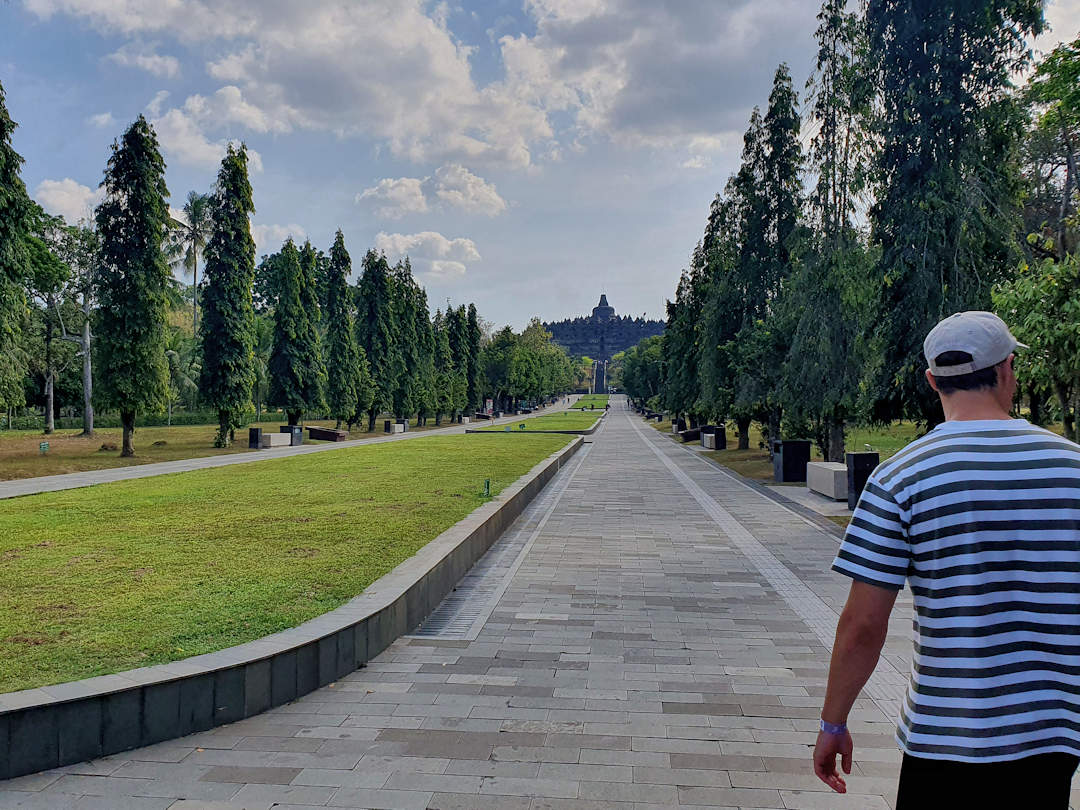
Your guided tour begins with a 15-20 minute walk to the temple structure during which you'll receive some initial information about the site
Once at the temple, your wristband will be scanned, and you follow your tour guide up the stairs. Your tour guide will stop at one or two of the lower levels to provide further details about the temple, Buddha, and Buddhism (our tour guide was lovely, but he provided almost too much information).
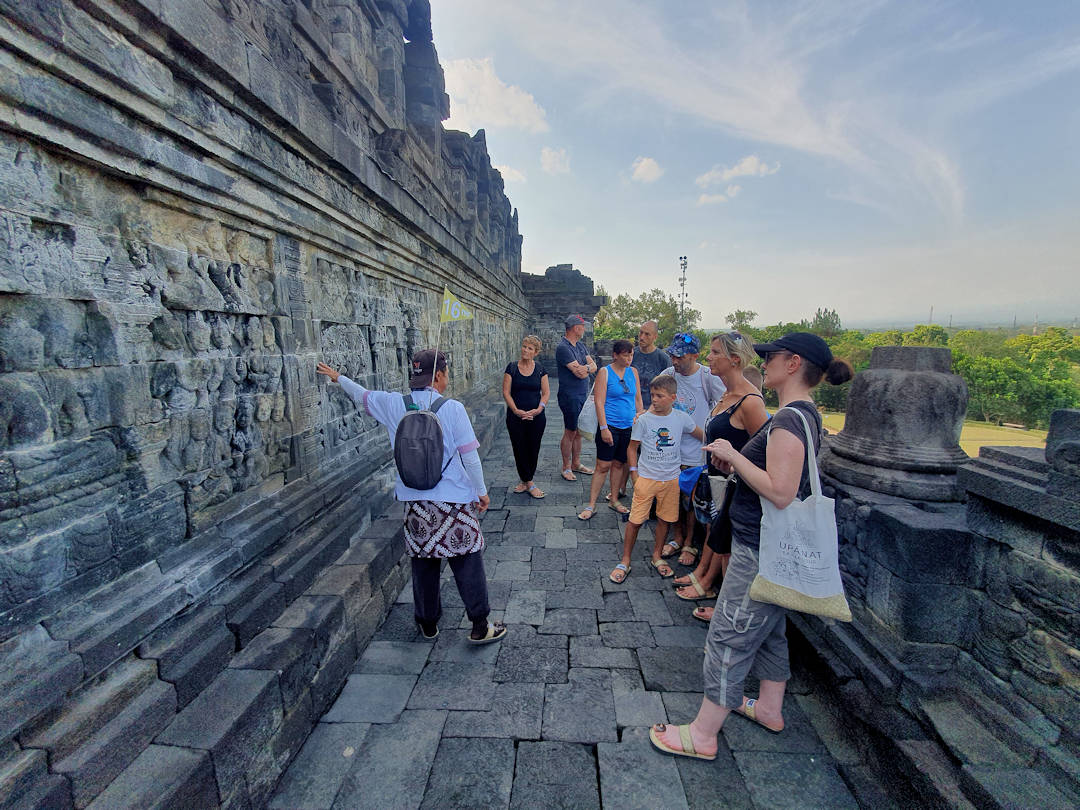
Guided tours at Borobudur are limited to 10-15 visitors per guide. For non-Indonesians, they are held in English (and other languages with pre-booking).
You will also have 15 to 20 minutes at the top levels (those with the stupas) to roam around on your own. The top level with the single stupa is off-limits to visitors.
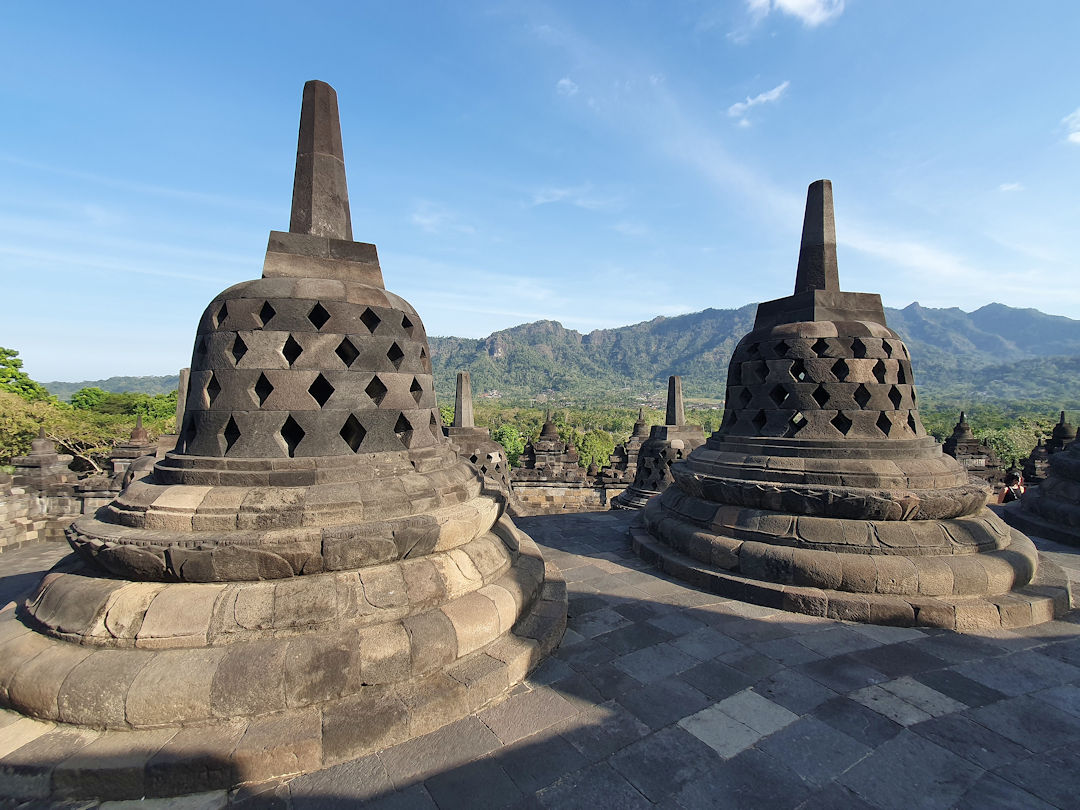
During the tour, you will also have the chance to look around the top of the Temple on your own
When your time is up, your tour guide will lead you back down to the temple exit where your wristband is scanned again.
Once your wristband has been re-scanned, you’re free to change back into your shoes (you can keep both the flip-flops and the canvas bag as souvenirs) and roam around the temple grounds on your own.
To exit the temple grounds you are required to walk through a maze of (largely souvenir) stalls. It takes about 20 minutes to get through it all.
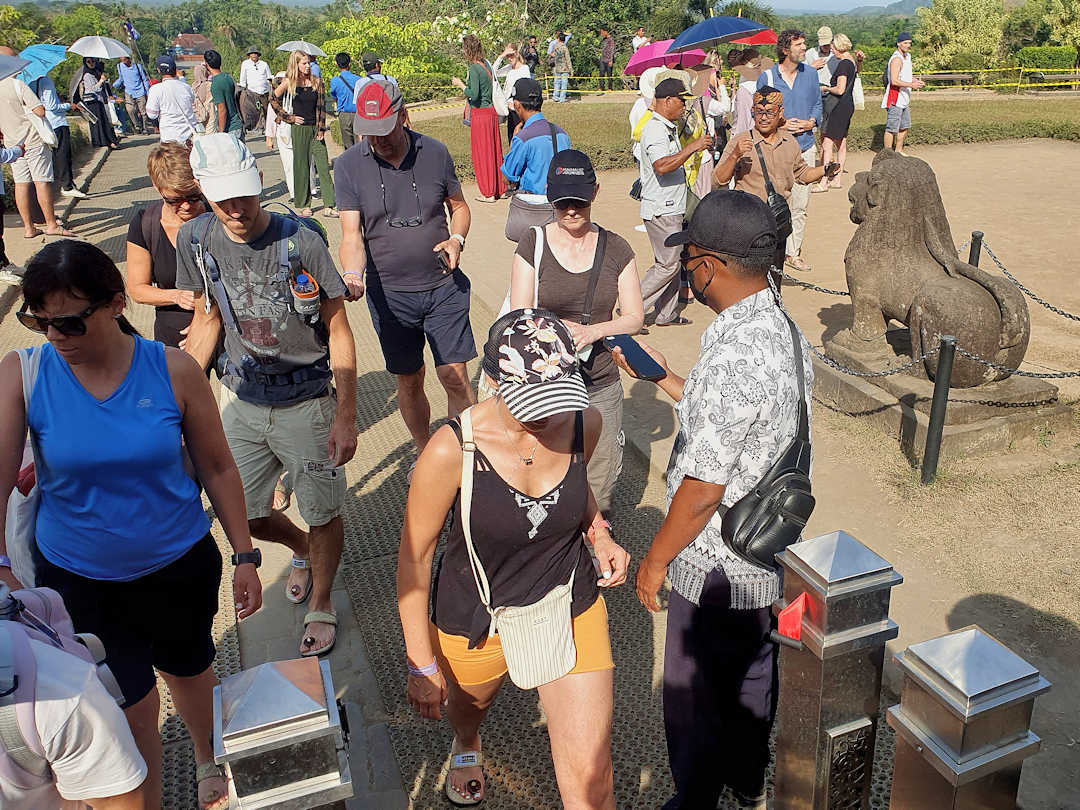
Visitors with a temple structure ticket will receive a wristband that is scanned upon entry and exit of Borobudur Temple
What else is important to know when visiting Borobudur Temple?
What should I bring?
There is an official dress code (no shorts for women, and shoulders must be covered). It wasn’t enforced when we visited, but we recommend obeying the rules anyhow, out of respect.
There is no shade once you’re on the temple structure, so make sure to wear sunscreen and a hat. Also, bring water to stay hydrated – though you are not allowed to consume any drinks (or food) at the temple itself.
Want to know what we pack as full-time location-independent explorers?
We research and document every item that we carry as travellers, whether during van life in our backpacks or as digital nomads, earning a living on the road. These packing lists are all based on our own experience. If you travel (and who doesn't) and you have something to add as recommendations for the items to carry, please feel free to contact us.
If you liked our packing lists and found them helpful, we would appreciate it if you could share them with your friends and family via the Share buttons below. Even better, link to the page from your personal blog or social media platforms.
And speaking of food and drinks: There are food stalls by the parking area (as you enter or exit the temple grounds). You don’t need a ticket to access the stalls. Food quality, prices, and service are surprisingly good (at least where we went: Mie Ayam Pak Man [Google Maps location]). There are also water fountains (though we only saw them on the grounds after you exit the temple structure, near the prayer room).
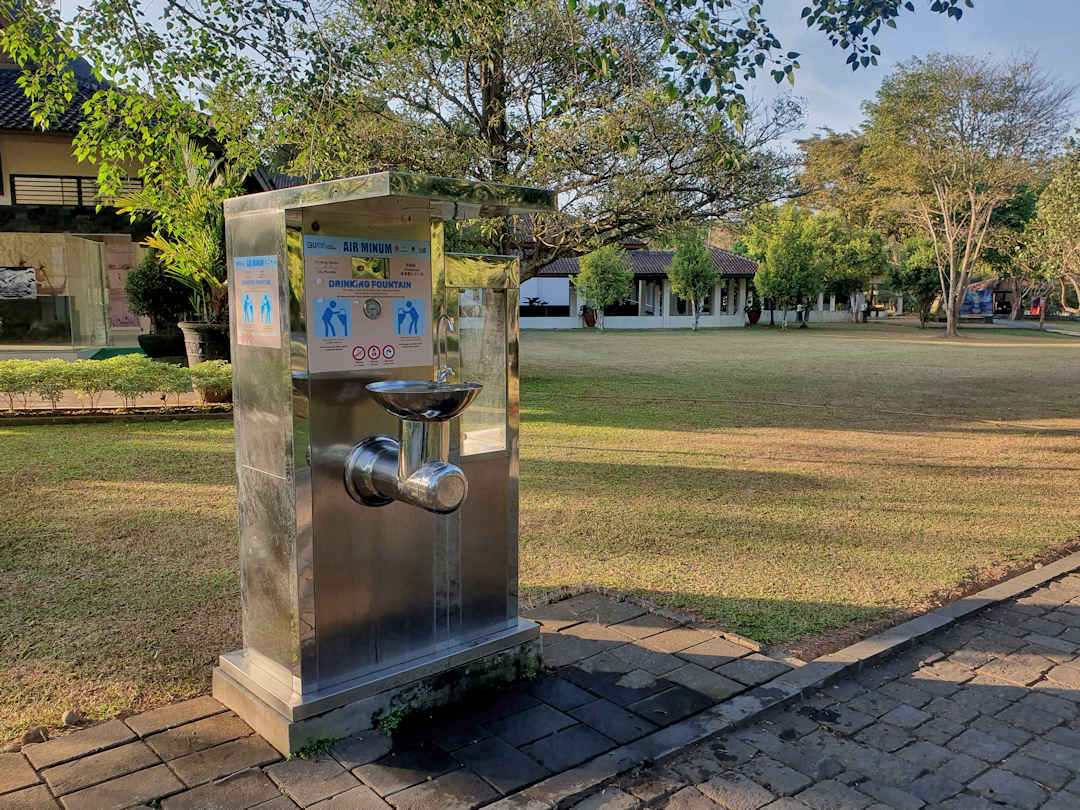
Food and drinks are not allowed at Borobudur Temple, but you can bring a water bottle and refill it at stations like this on the temple grounds
Are there bathrooms in the Borobudur Temple complex?
There are FREE public toilets once you’re inside the temple grounds:
- inside the building that houses the entry for foreigners;
- in a building by the waiting area (where you change into your flip-flops/wait for your tour guide);
- half-way along the avenue leading up to the temple structure (on the left-hand side); and
- after you exit the temple structure and walk back towards the entrance (near the prayer room).
Bathrooms next to the temple entrance charge a usage fee of IDR2,000 per person.
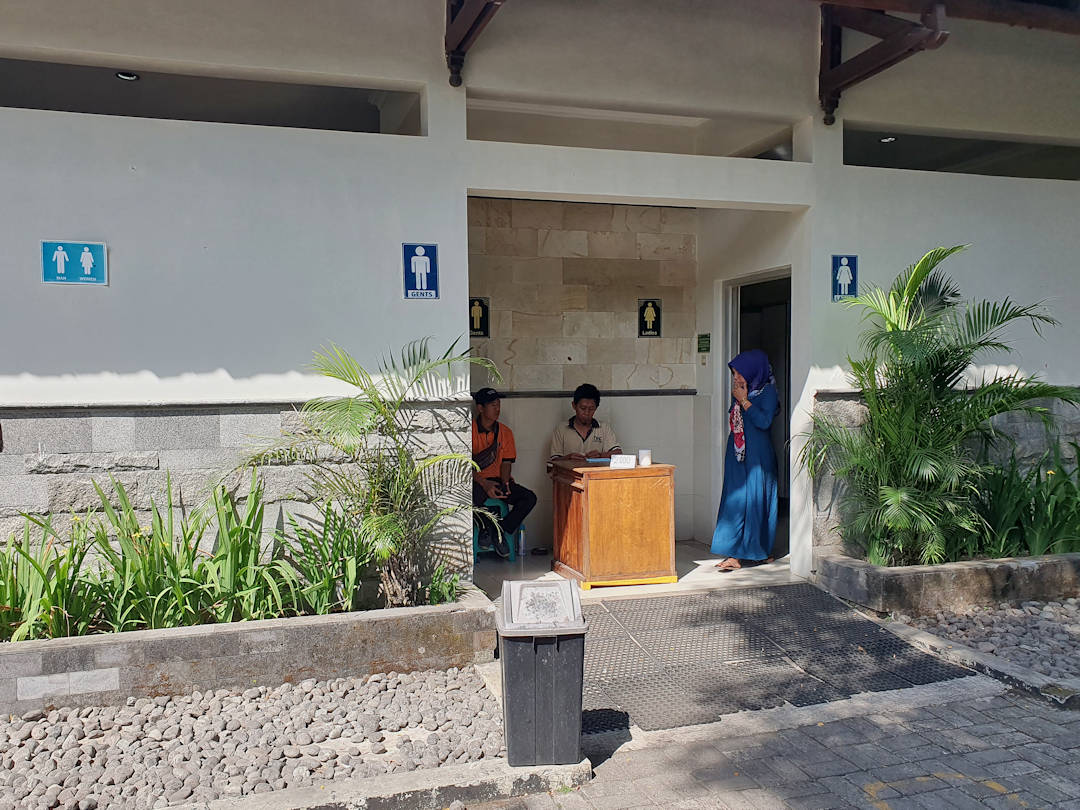
Don't use the toilets outside the entrance if you can help it - there are FREE bathrooms once you're inside the temple grounds
Can I visit Borobudur Temple at sunrise/sunset?
Sunrise/sunset tours are no longer offered at the temple structure itself.
To view the sun rise over Borobudur, Mt Merapi, and Mt Merbabu, people head to various viewpoints to the (south) west of the temple complex, for example, Punthuk Setumbu [Official website, Google Maps location] and Bukit Rhema Gereja Ayam (better known as the Chicken Church) [Google Maps location].
To experience the sunrise from either of these points, arrive 1.5 to 2 hours before sunrise. It can get busy and hearing the choir of muezzins call for prayer across the still-dark valley is pretty special. Take a Grab/Ojek to get there and back.
We watched the sunrise from a different spot (where it was just us). If you stay at Griyo Jagalan, ask your wonderful host Berman to take you there.
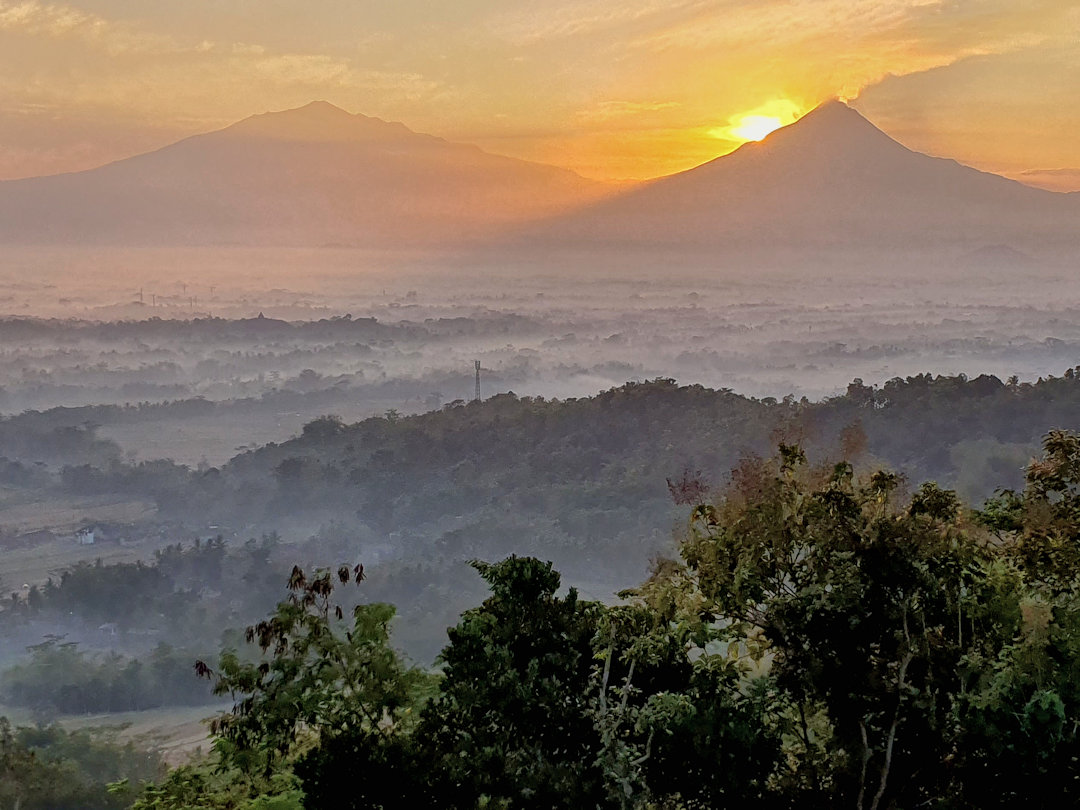
To watch the sunrise over Borobudur and Mt Merapi, head to one of the viewing points (south) west of the temple
When to avoid visiting Borobudur?
Apart from avoiding Mondays if you want to visit Candi Borobudur (and not just the temple grounds), avoid weekends and public holidays. Also avoid Vesak, an important Buddhist festival at the end of May/early June, when Buddhists from around the world make the pilgrimage to Borobudur.
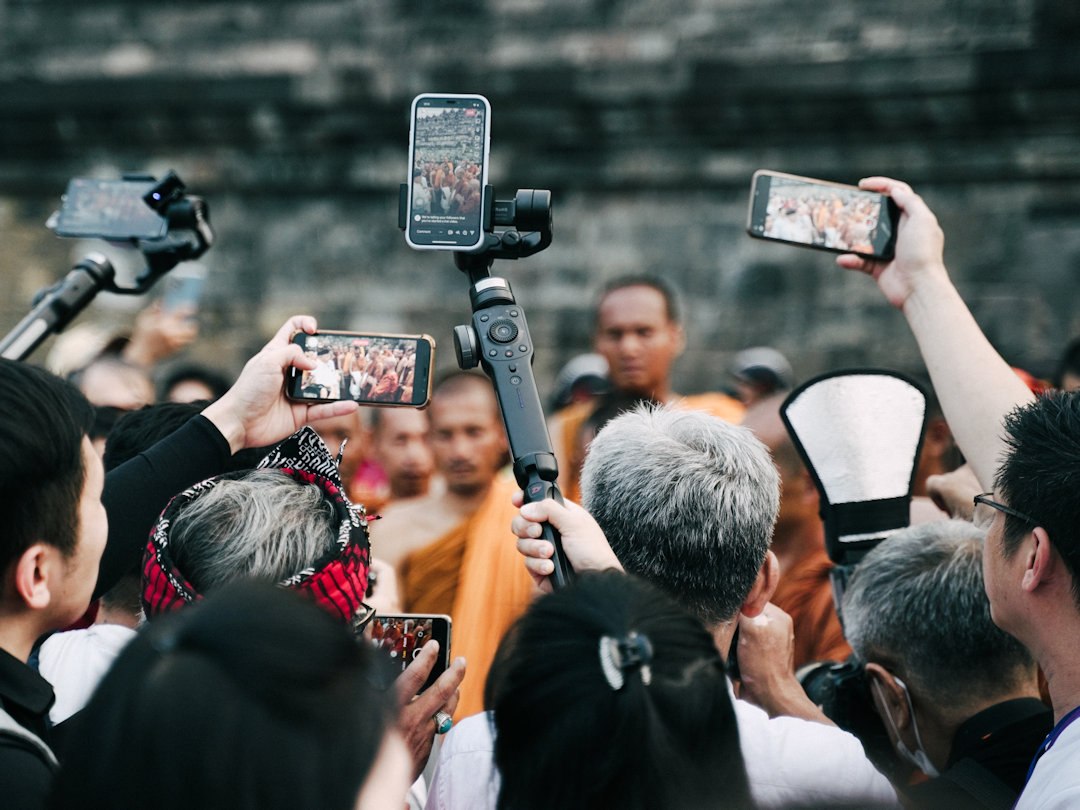
To avoid the crowds, don't visit Borobudur on weekends and public holidays - especially during Vesak, when the area is packed with pilgrims
Other things to see and do around Borobudur
Other temples
The temple complex of Borobudur comprises three temples – Candi Borobudur [Google Maps location], Candi Pawon [Google Maps location], and Candi Mendut [Google Maps location].
The latter two are located outside the main temple complex:
- Candi Pawon is 1 kilometer east from the entrance to the temple grounds (an easy, flat walk); and
- Candi Mendut is 2 kilometers further east from Candi Pawon (best to get a Grab/Ojek).
Entry is free for Candi Pawon. Candi Mendut charges IDR20,500 per person. If you can only visit one, go to Candi Mendut (which is also a working Buddhist monastery). Check the opening hours before you go.
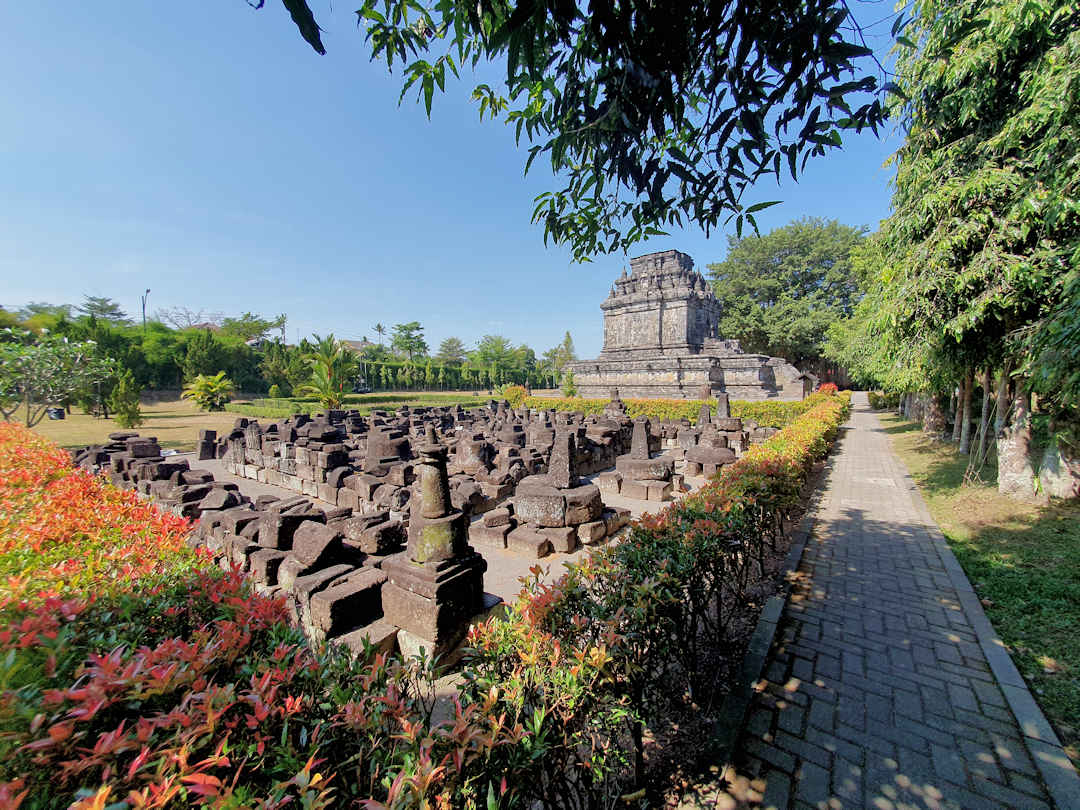
Borobudur comprises three temples, including Candi Mendut, a working Buddhist Monastery
Other activities
What many don’t know: Borobudur offers a range of outdoor activities – from rafting on the Progo River to cycling tours. You can also visit local producers, for example, the Ashfa Honey Bee Farm (get a Grab/Ojek or join a VW Jeep tour). Plenty to keep you busy for a few days.
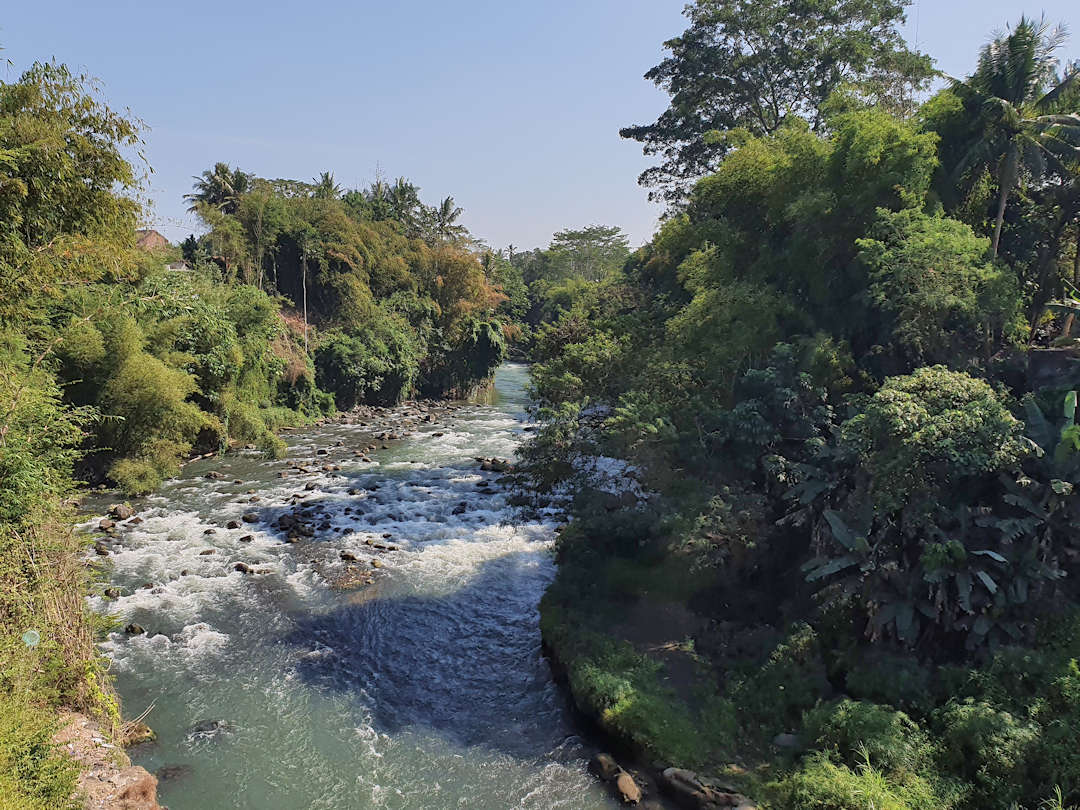
Besides the temple complex, visitors to Borobudur can enjoy a range of outdoor activities, including rafting on the Progo River
Where to stay in Borobudur
For accommodation, as with any other travel expenses, it’s worth shopping around. When we booked our accommodation, we looked across several booking platforms to find the best value-for-money option but found in this case that Booking.com offered us the best choice and price point. Wherever you book, do make sure you read the fine print to make sure you compare apples with apples. For example, your stay may incur extra charges (like local tourist taxes or cleaning fees). Some booking platforms include them, while with others, you have to pay them to your host upon arrival.
Below are my recommendations for accommodation options that fit the criteria of affordable, often meeting a sustainability certification, and that are close to public transport and points of interest.
| Name | Property Features | Type | Price Indicator | Book Now |
|---|---|---|---|---|
| Bhumi Kasuryan Borobudur | Travel Sustainable Level 1 Restaurant and room service | Guesthouse | $ | Book Now |
| Griyo Jagalan | Travel Sustainable Level 3 Close to Borobudur Temple Friendly hosts Offers bicycle rental and private tours | Guesthouse | $ | Book Now |
| The Omah Borobudur | Restaurant Room service 24-hour front desk | Hotel | $ | Book Now |
Be aware that being in Java, an island with a largely Muslim population, you will (almost) always be in the vicinity of a mosque. Bring earplugs if being woken by the muezzin calling for prayer before sunrise bothers you.
Alternative accommodation options in Borobudur are below.
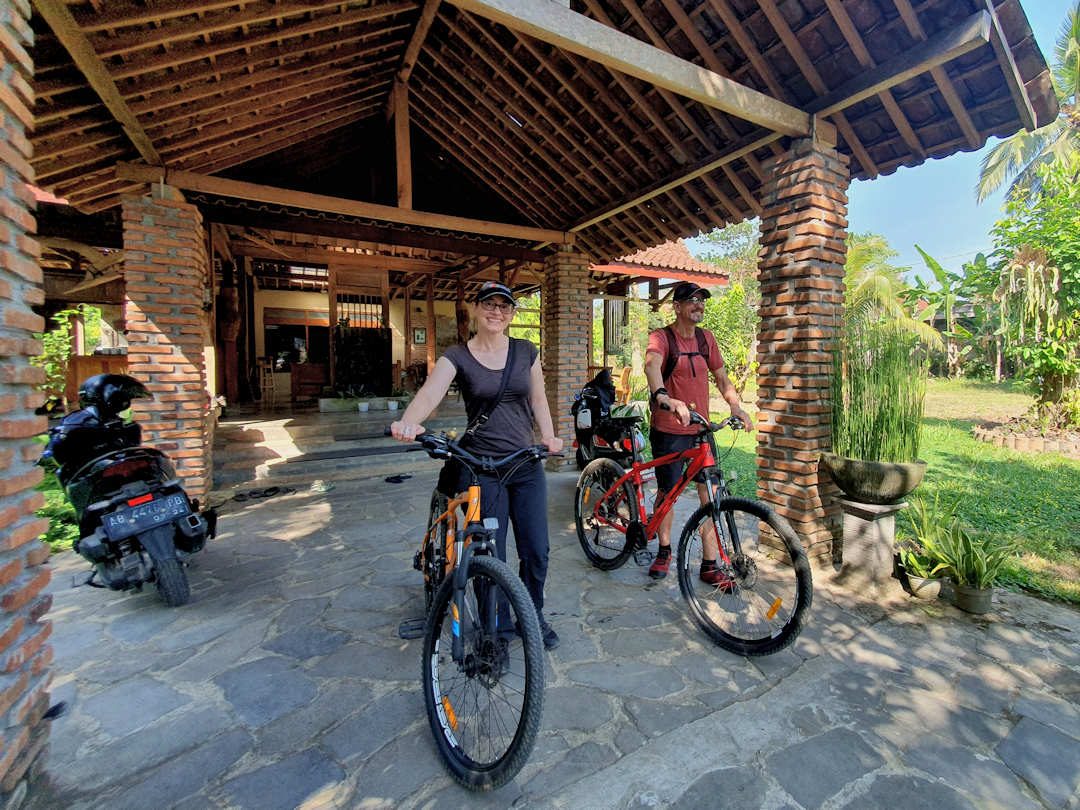
You can also join bicycle tours through rice paddies and local villages where you'll learn about Javanese handicrafts and the process of making palm sugar
Where to eat in Borobudur
There are many eating places within walking distance from the entrance to the main Borobudur Temple complex. We can recommend:
- Alea Guesthouse Cafe [Google Maps location]
- Seafood Borobudur [Google Maps location]
- the Omah Borobudur Resto [Google Maps location]; and
- UPRUS Coffee & Co [Google Maps location].
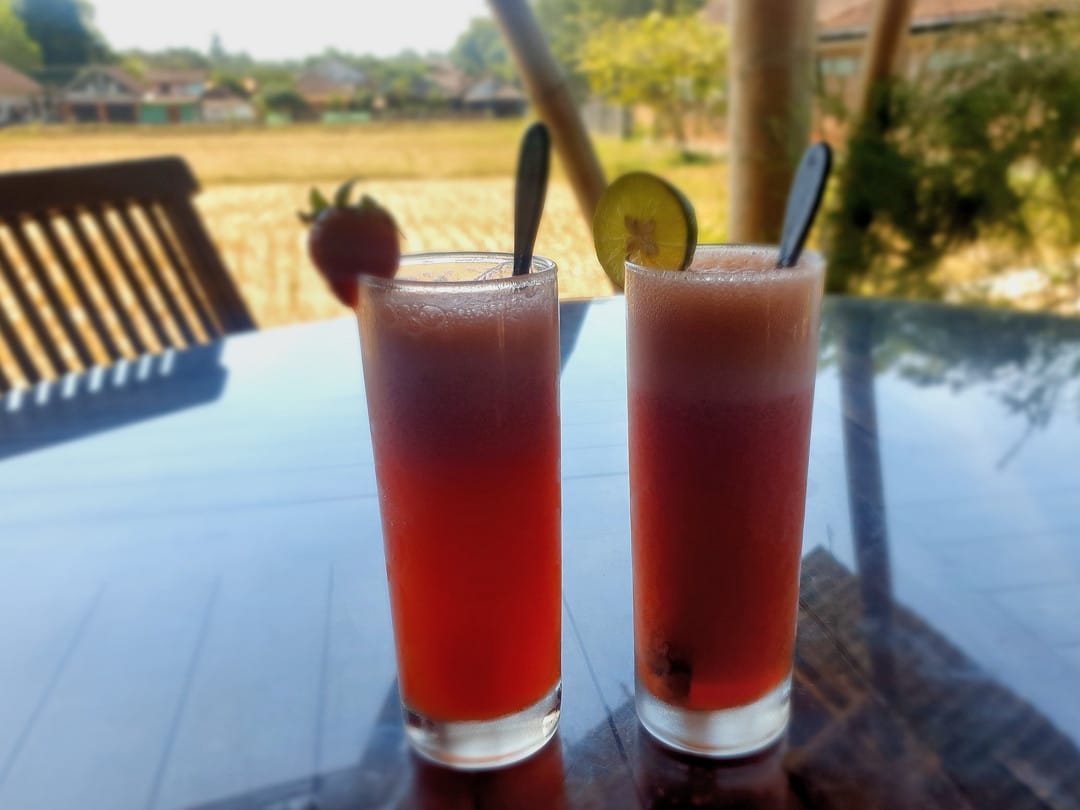
Cool down in the mid-day heat with a refreshing drink at one of the family-run cafes in Borobudur
What was your experience like when you visited Borobudur? And what would you add to our guide?
I wrote this Borobudur Guide Travel Guide based on my own experience. If you have been to Borobudur as well, what was your experience like? And what would you add to our guide? Keen to visit Borobudur but still have questions we haven’t answered (yet)? If you liked my Borobudur Guide and tips and found them helpful, I would appreciate it if you could share them with your friends and family via the Share buttons below. Even better, link to the page from your personal blog or social media platforms.

